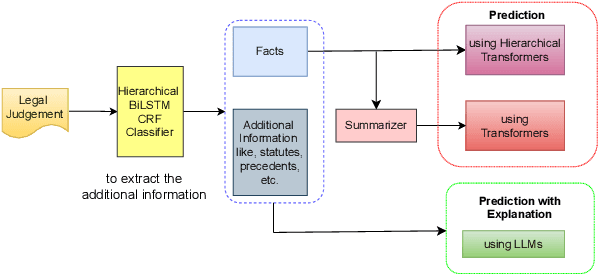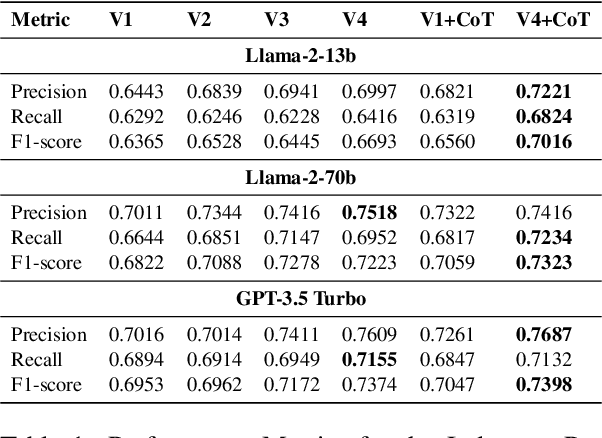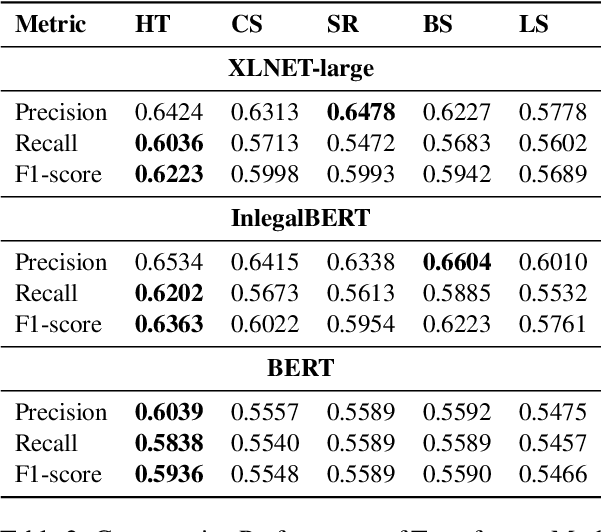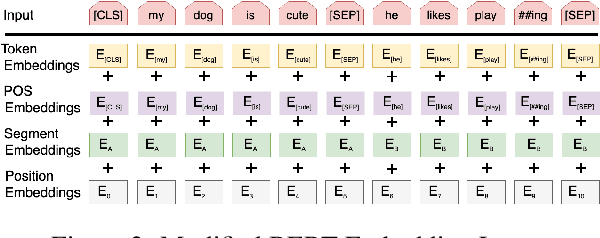Shubham Kumar Nigam
Segment First, Retrieve Better: Realistic Legal Search via Rhetorical Role-Based Queries
Aug 01, 2025Abstract:Legal precedent retrieval is a cornerstone of the common law system, governed by the principle of stare decisis, which demands consistency in judicial decisions. However, the growing complexity and volume of legal documents challenge traditional retrieval methods. TraceRetriever mirrors real-world legal search by operating with limited case information, extracting only rhetorically significant segments instead of requiring complete documents. Our pipeline integrates BM25, Vector Database, and Cross-Encoder models, combining initial results through Reciprocal Rank Fusion before final re-ranking. Rhetorical annotations are generated using a Hierarchical BiLSTM CRF classifier trained on Indian judgments. Evaluated on IL-PCR and COLIEE 2025 datasets, TraceRetriever addresses growing document volume challenges while aligning with practical search constraints, reliable and scalable foundation for precedent retrieval enhancing legal research when only partial case knowledge is available.
NyayaRAG: Realistic Legal Judgment Prediction with RAG under the Indian Common Law System
Aug 01, 2025Abstract:Legal Judgment Prediction (LJP) has emerged as a key area in AI for law, aiming to automate judicial outcome forecasting and enhance interpretability in legal reasoning. While previous approaches in the Indian context have relied on internal case content such as facts, issues, and reasoning, they often overlook a core element of common law systems, which is reliance on statutory provisions and judicial precedents. In this work, we propose NyayaRAG, a Retrieval-Augmented Generation (RAG) framework that simulates realistic courtroom scenarios by providing models with factual case descriptions, relevant legal statutes, and semantically retrieved prior cases. NyayaRAG evaluates the effectiveness of these combined inputs in predicting court decisions and generating legal explanations using a domain-specific pipeline tailored to the Indian legal system. We assess performance across various input configurations using both standard lexical and semantic metrics as well as LLM-based evaluators such as G-Eval. Our results show that augmenting factual inputs with structured legal knowledge significantly improves both predictive accuracy and explanation quality.
TathyaNyaya and FactLegalLlama: Advancing Factual Judgment Prediction and Explanation in the Indian Legal Context
Apr 07, 2025Abstract:In the landscape of Fact-based Judgment Prediction and Explanation (FJPE), reliance on factual data is essential for developing robust and realistic AI-driven decision-making tools. This paper introduces TathyaNyaya, the largest annotated dataset for FJPE tailored to the Indian legal context, encompassing judgments from the Supreme Court of India and various High Courts. Derived from the Hindi terms "Tathya" (fact) and "Nyaya" (justice), the TathyaNyaya dataset is uniquely designed to focus on factual statements rather than complete legal texts, reflecting real-world judicial processes where factual data drives outcomes. Complementing this dataset, we present FactLegalLlama, an instruction-tuned variant of the LLaMa-3-8B Large Language Model (LLM), optimized for generating high-quality explanations in FJPE tasks. Finetuned on the factual data in TathyaNyaya, FactLegalLlama integrates predictive accuracy with coherent, contextually relevant explanations, addressing the critical need for transparency and interpretability in AI-assisted legal systems. Our methodology combines transformers for binary judgment prediction with FactLegalLlama for explanation generation, creating a robust framework for advancing FJPE in the Indian legal domain. TathyaNyaya not only surpasses existing datasets in scale and diversity but also establishes a benchmark for building explainable AI systems in legal analysis. The findings underscore the importance of factual precision and domain-specific tuning in enhancing predictive performance and interpretability, positioning TathyaNyaya and FactLegalLlama as foundational resources for AI-assisted legal decision-making.
Structured Legal Document Generation in India: A Model-Agnostic Wrapper Approach with VidhikDastaavej
Apr 04, 2025Abstract:Automating legal document drafting can significantly enhance efficiency, reduce manual effort, and streamline legal workflows. While prior research has explored tasks such as judgment prediction and case summarization, the structured generation of private legal documents in the Indian legal domain remains largely unaddressed. To bridge this gap, we introduce VidhikDastaavej, a novel, anonymized dataset of private legal documents, and develop NyayaShilp, a fine-tuned legal document generation model specifically adapted to Indian legal texts. We propose a Model-Agnostic Wrapper (MAW), a two-step framework that first generates structured section titles and then iteratively produces content while leveraging retrieval-based mechanisms to ensure coherence and factual accuracy. We benchmark multiple open-source LLMs, including instruction-tuned and domain-adapted versions, alongside proprietary models for comparison. Our findings indicate that while direct fine-tuning on small datasets does not always yield improvements, our structured wrapper significantly enhances coherence, factual adherence, and overall document quality while mitigating hallucinations. To ensure real-world applicability, we developed a Human-in-the-Loop (HITL) Document Generation System, an interactive user interface that enables users to specify document types, refine section details, and generate structured legal drafts. This tool allows legal professionals and researchers to generate, validate, and refine AI-generated legal documents efficiently. Extensive evaluations, including expert assessments, confirm that our framework achieves high reliability in structured legal drafting. This research establishes a scalable and adaptable foundation for AI-assisted legal drafting in India, offering an effective approach to structured legal document generation.
LegalSeg: Unlocking the Structure of Indian Legal Judgments Through Rhetorical Role Classification
Feb 09, 2025Abstract:In this paper, we address the task of semantic segmentation of legal documents through rhetorical role classification, with a focus on Indian legal judgments. We introduce LegalSeg, the largest annotated dataset for this task, comprising over 7,000 documents and 1.4 million sentences, labeled with 7 rhetorical roles. To benchmark performance, we evaluate multiple state-of-the-art models, including Hierarchical BiLSTM-CRF, TransformerOverInLegalBERT (ToInLegalBERT), Graph Neural Networks (GNNs), and Role-Aware Transformers, alongside an exploratory RhetoricLLaMA, an instruction-tuned large language model. Our results demonstrate that models incorporating broader context, structural relationships, and sequential sentence information outperform those relying solely on sentence-level features. Additionally, we conducted experiments using surrounding context and predicted or actual labels of neighboring sentences to assess their impact on classification accuracy. Despite these advancements, challenges persist in distinguishing between closely related roles and addressing class imbalance. Our work underscores the potential of advanced techniques for improving legal document understanding and sets a strong foundation for future research in legal NLP.
NyayaAnumana & INLegalLlama: The Largest Indian Legal Judgment Prediction Dataset and Specialized Language Model for Enhanced Decision Analysis
Dec 11, 2024



Abstract:The integration of artificial intelligence (AI) in legal judgment prediction (LJP) has the potential to transform the legal landscape, particularly in jurisdictions like India, where a significant backlog of cases burdens the legal system. This paper introduces NyayaAnumana, the largest and most diverse corpus of Indian legal cases compiled for LJP, encompassing a total of 7,02,945 preprocessed cases. NyayaAnumana, which combines the words "Nyay" (judgment) and "Anuman" (prediction or inference) respectively for most major Indian languages, includes a wide range of cases from the Supreme Court, High Courts, Tribunal Courts, District Courts, and Daily Orders and, thus, provides unparalleled diversity and coverage. Our dataset surpasses existing datasets like PredEx and ILDC, offering a comprehensive foundation for advanced AI research in the legal domain. In addition to the dataset, we present INLegalLlama, a domain-specific generative large language model (LLM) tailored to the intricacies of the Indian legal system. It is developed through a two-phase training approach over a base LLaMa model. First, Indian legal documents are injected using continual pretraining. Second, task-specific supervised finetuning is done. This method allows the model to achieve a deeper understanding of legal contexts. Our experiments demonstrate that incorporating diverse court data significantly boosts model accuracy, achieving approximately 90% F1-score in prediction tasks. INLegalLlama not only improves prediction accuracy but also offers comprehensible explanations, addressing the need for explainability in AI-assisted legal decisions.
Rethinking Legal Judgement Prediction in a Realistic Scenario in the Era of Large Language Models
Oct 14, 2024



Abstract:This study investigates judgment prediction in a realistic scenario within the context of Indian judgments, utilizing a range of transformer-based models, including InLegalBERT, BERT, and XLNet, alongside LLMs such as Llama-2 and GPT-3.5 Turbo. In this realistic scenario, we simulate how judgments are predicted at the point when a case is presented for a decision in court, using only the information available at that time, such as the facts of the case, statutes, precedents, and arguments. This approach mimics real-world conditions, where decisions must be made without the benefit of hindsight, unlike retrospective analyses often found in previous studies. For transformer models, we experiment with hierarchical transformers and the summarization of judgment facts to optimize input for these models. Our experiments with LLMs reveal that GPT-3.5 Turbo excels in realistic scenarios, demonstrating robust performance in judgment prediction. Furthermore, incorporating additional legal information, such as statutes and precedents, significantly improves the outcome of the prediction task. The LLMs also provide explanations for their predictions. To evaluate the quality of these predictions and explanations, we introduce two human evaluation metrics: Clarity and Linking. Our findings from both automatic and human evaluations indicate that, despite advancements in LLMs, they are yet to achieve expert-level performance in judgment prediction and explanation tasks.
Legal Judgment Reimagined: PredEx and the Rise of Intelligent AI Interpretation in Indian Courts
Jun 06, 2024Abstract:In the era of Large Language Models (LLMs), predicting judicial outcomes poses significant challenges due to the complexity of legal proceedings and the scarcity of expert-annotated datasets. Addressing this, we introduce \textbf{Pred}iction with \textbf{Ex}planation (\texttt{PredEx}), the largest expert-annotated dataset for legal judgment prediction and explanation in the Indian context, featuring over 15,000 annotations. This groundbreaking corpus significantly enhances the training and evaluation of AI models in legal analysis, with innovations including the application of instruction tuning to LLMs. This method has markedly improved the predictive accuracy and explanatory depth of these models for legal judgments. We employed various transformer-based models, tailored for both general and Indian legal contexts. Through rigorous lexical, semantic, and expert assessments, our models effectively leverage \texttt{PredEx} to provide precise predictions and meaningful explanations, establishing it as a valuable benchmark for both the legal profession and the NLP community.
Fact-based Court Judgment Prediction
Nov 22, 2023Abstract:This extended abstract extends the research presented in "ILDC for CJPE: Indian Legal Documents Corpus for Court Judgment Prediction and Explanation" \cite{malik-etal-2021-ildc}, focusing on fact-based judgment prediction within the context of Indian legal documents. We introduce two distinct problem variations: one based solely on facts, and another combining facts with rulings from lower courts (RLC). Our research aims to enhance early-phase case outcome prediction, offering significant benefits to legal professionals and the general public. The results, however, indicated a performance decline compared to the original ILDC for CJPE study, even after implementing various weightage schemes in our DELSumm algorithm. Additionally, using only facts for legal judgment prediction with different transformer models yielded results inferior to the state-of-the-art outcomes reported in the "ILDC for CJPE" study.
Nonet at SemEval-2023 Task 6: Methodologies for Legal Evaluation
Oct 17, 2023



Abstract:This paper describes our submission to the SemEval-2023 for Task 6 on LegalEval: Understanding Legal Texts. Our submission concentrated on three subtasks: Legal Named Entity Recognition (L-NER) for Task-B, Legal Judgment Prediction (LJP) for Task-C1, and Court Judgment Prediction with Explanation (CJPE) for Task-C2. We conducted various experiments on these subtasks and presented the results in detail, including data statistics and methodology. It is worth noting that legal tasks, such as those tackled in this research, have been gaining importance due to the increasing need to automate legal analysis and support. Our team obtained competitive rankings of 15$^{th}$, 11$^{th}$, and 1$^{st}$ in Task-B, Task-C1, and Task-C2, respectively, as reported on the leaderboard.
 Add to Chrome
Add to Chrome Add to Firefox
Add to Firefox Add to Edge
Add to Edge